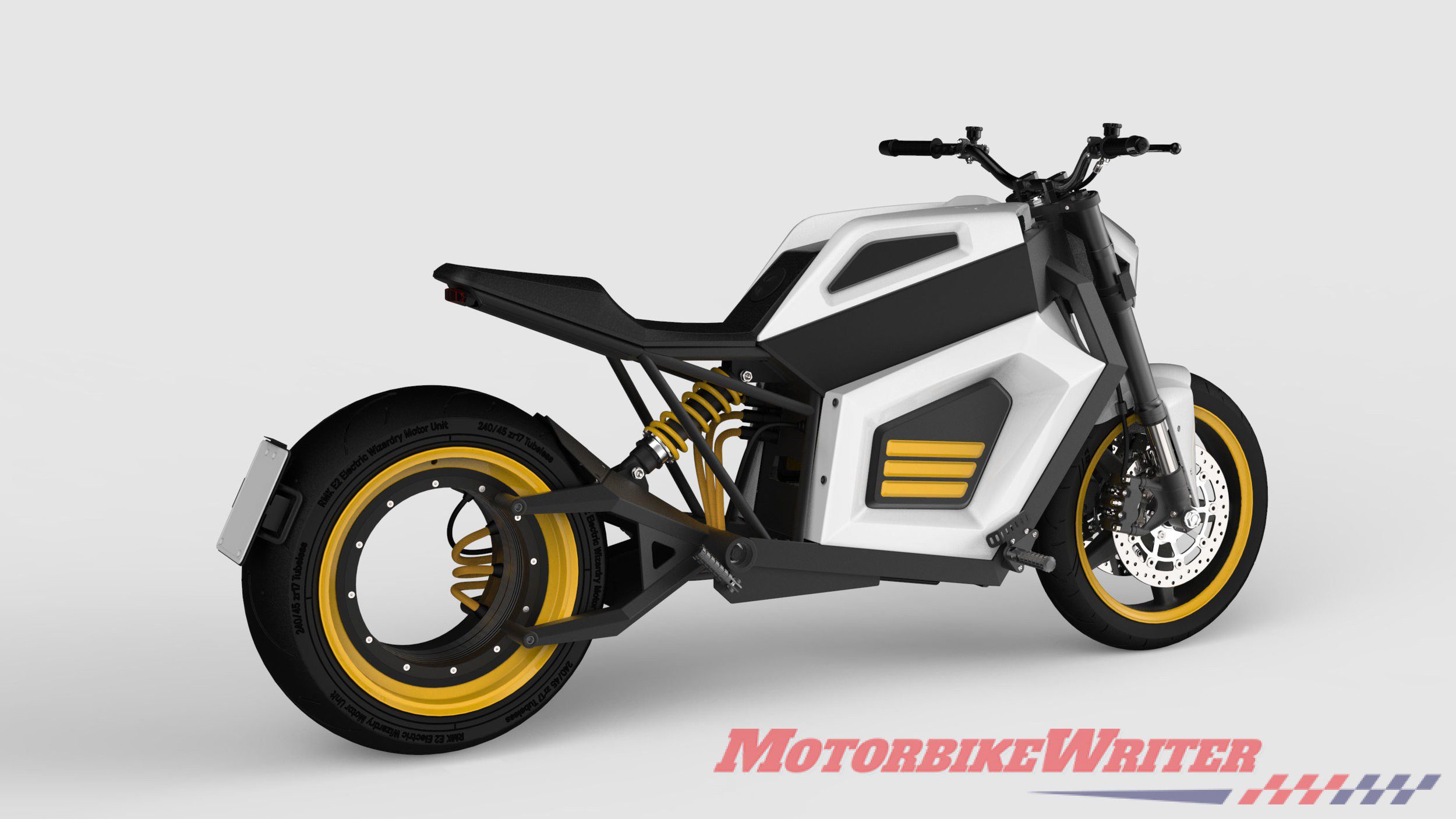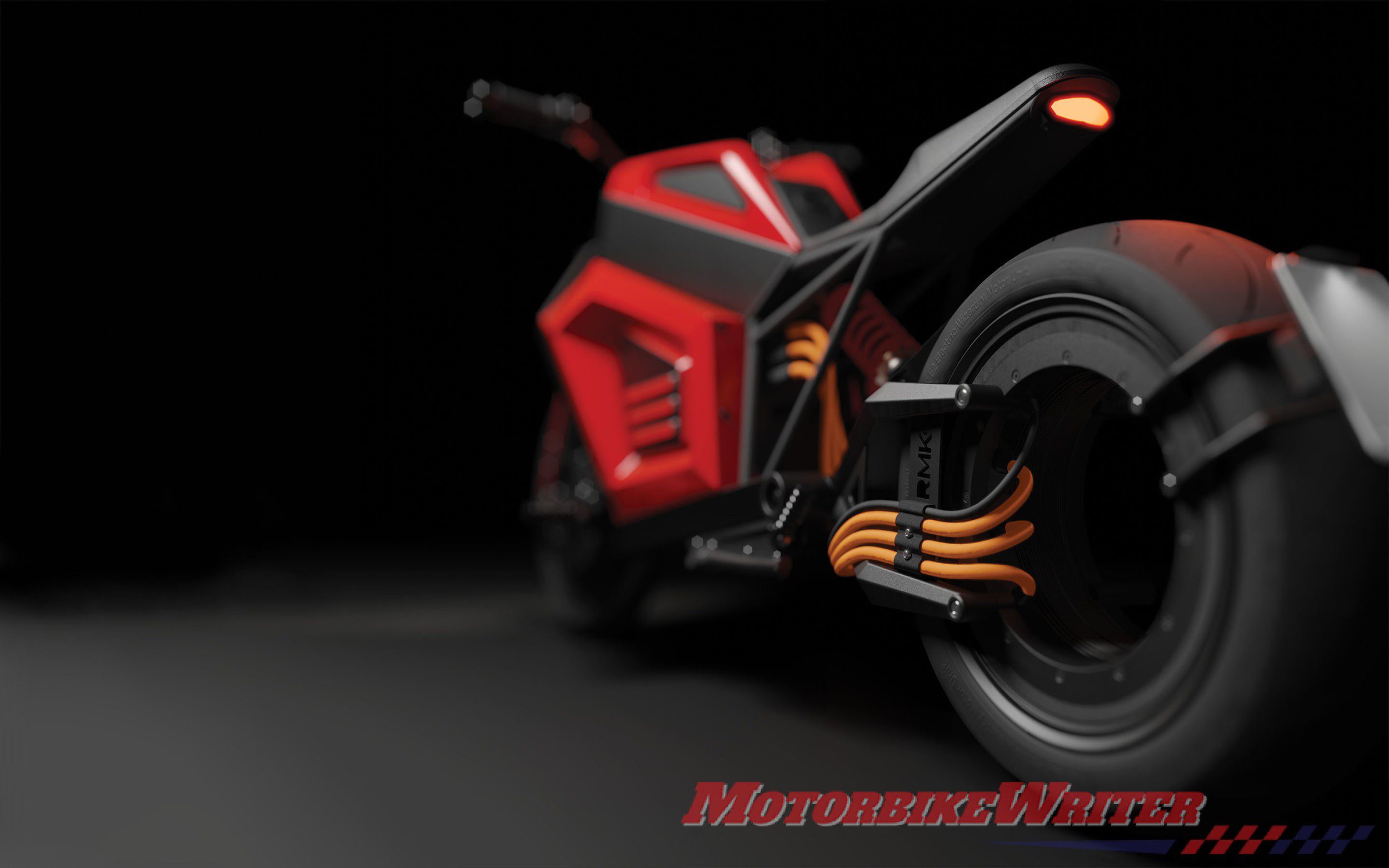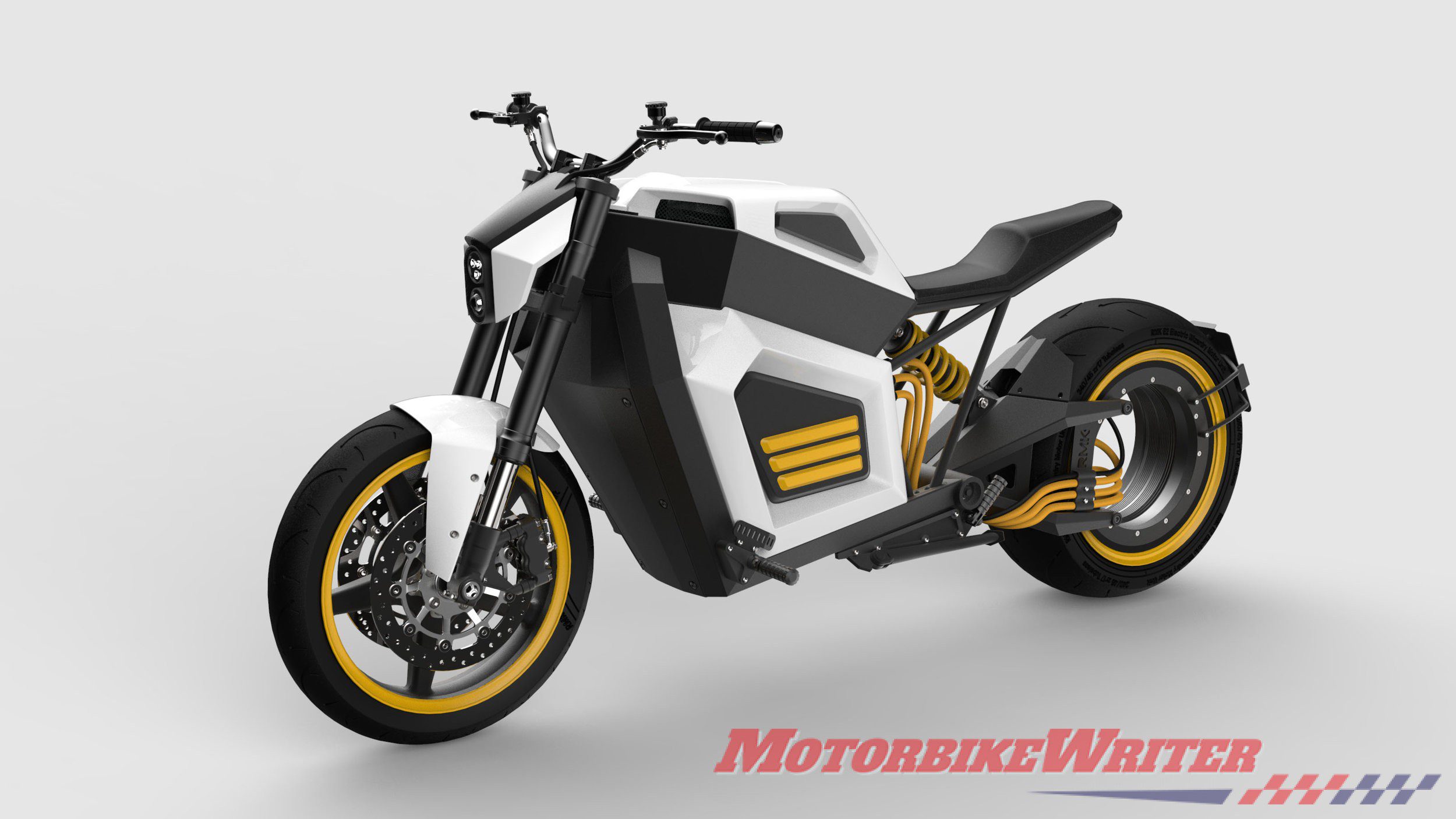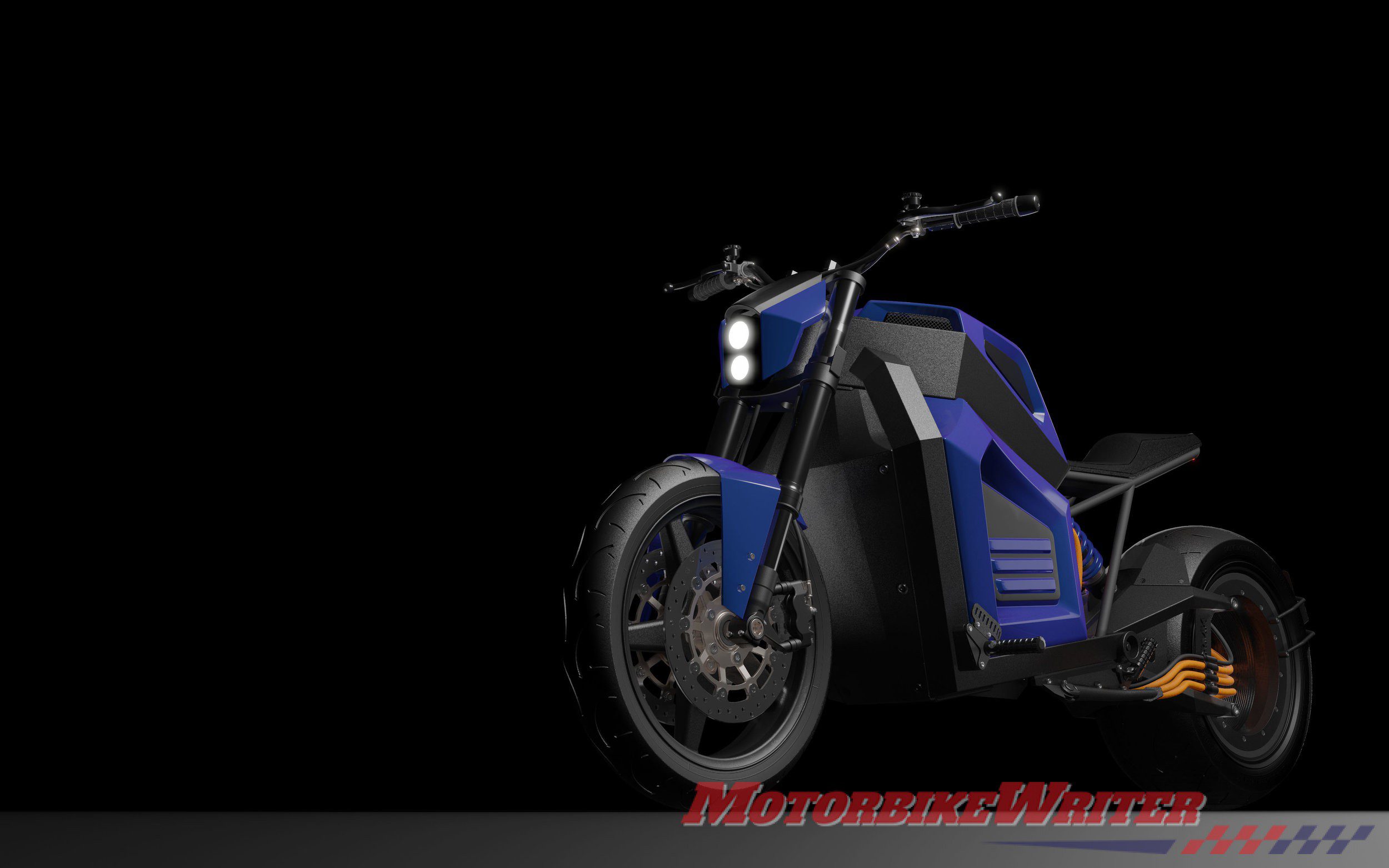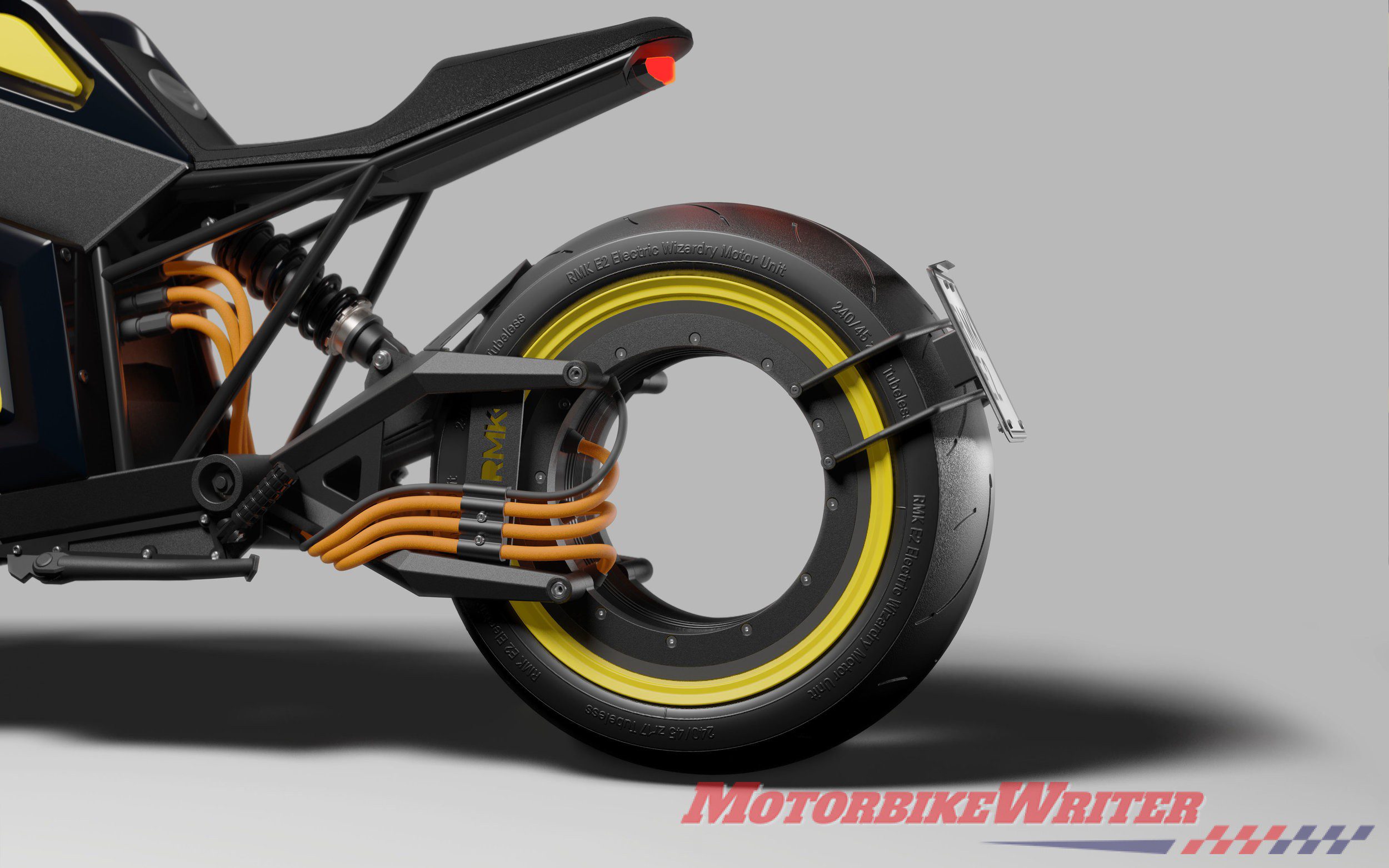Electric motorcycles are not bound by the physical constraints of internal combustion engines, so just about anything goes, like this electric E2 from Finnish company RMK.
Electric motors can be just about any shape and size and you can use multiple motors, while the batteries can also be any shape and size, especially if they are made up of a collection of smaller batteries linked together.
This allows designers to do whatever they want, says prolific designer Roland Sands. Consequently, we’ve seen some strange electric motorcycle, like this Johammer J1!

RMK says their “unconventional frame architecture” offers plenty of room for a large battery while keeping the overall bike weight at about 200kg.
RMK E2
The RMK E2 is still just a prototype, but the final production version will probably stay with the hubless rear wheel which incorporates an electric motor in a direct-drive situation.
They say the advantage of having the motor in the rear hubless wheel is lower rotational mass than a conventional bike while retaining similar unsprung mass. Tyre changes will also be easy.
RMK is moving into the testing phase, so final specifications have not yet been set.
However, the company does say the battery size “can be configured for 200-300km carefree riding, depending on customer preference”.
That’s not bad, but it’s nowhere near as good as Zero Motorcycle which has up to 320km of range.
With all electric vehicles, the range is a malleable figure.
It really does depend on how the vehicle is ridden/driven, ambient temperature and the consistency of throttle.
For example, range is totally opposite to a normal engine which goes further on the highway than in the city.
RMK say their fast-charging system will charge from flat to 80% in about two hours.
That’s a long time to wait to do another 160-240km.
Instant torque
RMK claim 50kW of power and “instant 320Nm torque from standstill all the way to a limited top speed of 160km/h”.
They say the motor has enough torque braking effect to be the primary rear brake. So it doesn’t need a brake disc, although the left lever does control regenerative motor braking.
The front wheel has a conventional set-up of dual brake discs controlled by the right lever.
Regenerative braking in most electric motorcycles and cars dramatically reduces the need for braking. In fact, when we rode the original 2014 Harley LiveWire in LA, we didn’t once use the brakes in traffic, except for the final stop.
Also, like the LiveWire, the RMK E2 has no gears.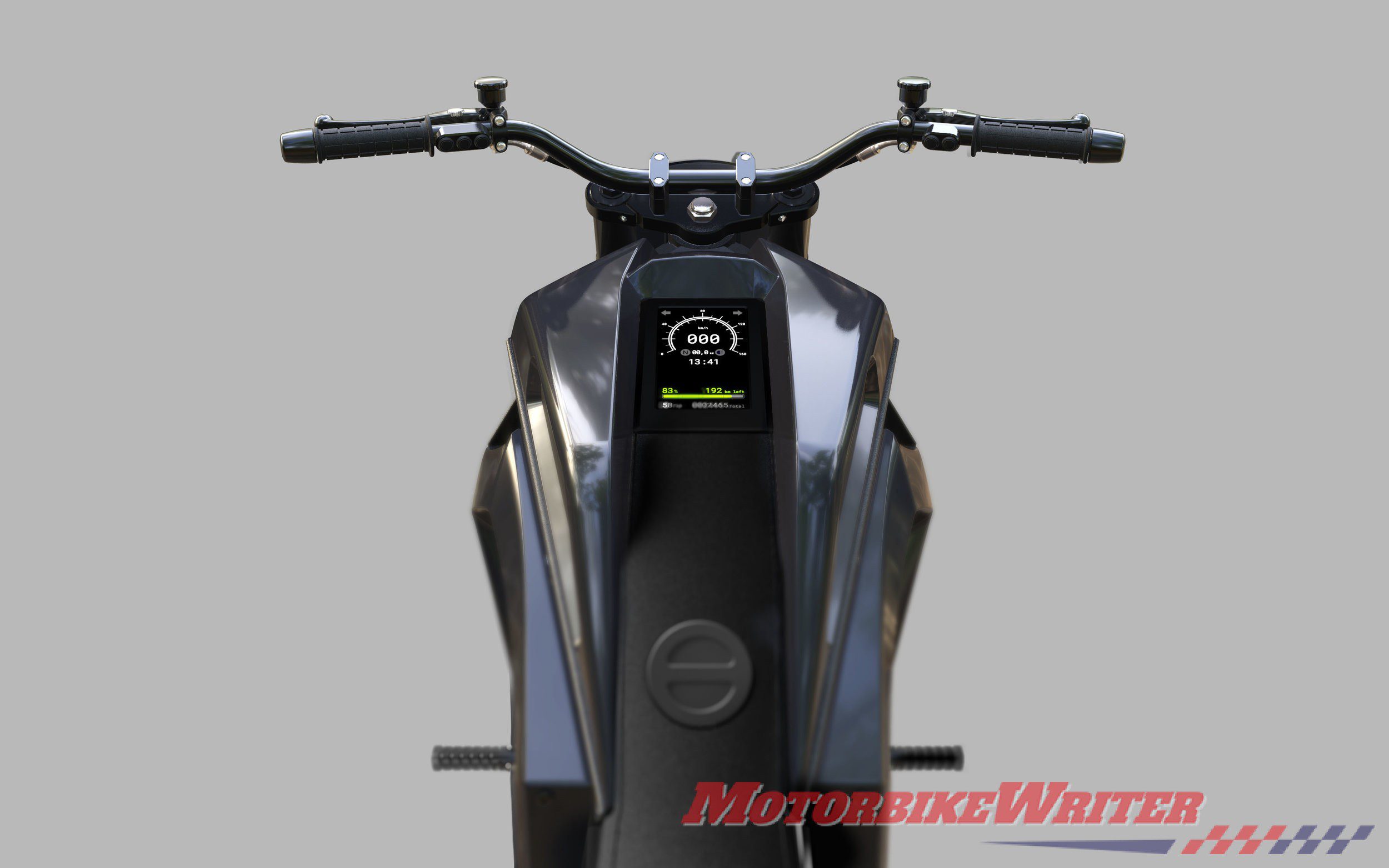
The dashboard is on the tank and, together with the low headlight, offers a “clean electric experience with no clutter in your field of vision”.
However, tank-mounted instruments will be difficult to see while trying to keep your eyes on the road ahead.
There is no word on production schedule or pricing, but we hope it would be less than the LiveWire arriving in August in North America and Europe at just under $US30,000.
When the LiveWire arrives in Australia next year, it should cost more than $41,000!


